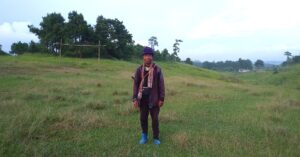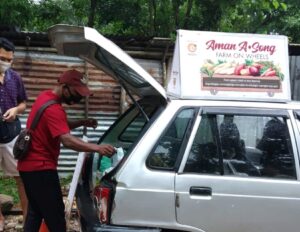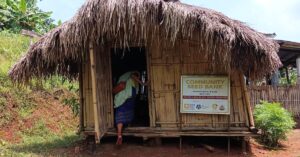Located in the South West Garo Hills District of Meghalaya, about 40 kilometres from the main town of Tura, are the adjoining communities of Kokatolgre, Baladinggre, Masudigre and Rongchadenggre. The four communities function under one Nokma or headman. The communities are active partner communities of NESFAS and are partaking in the ongoing project “Empowering Indigenous Communities through Agroecology Learning Circles (ALCs) for resilient, integrated and innovative natural resource management”, which is supported by MBMA and funded by the World Bank.
The communities have been practicing shifting cultivation for ages now, growing different varieties of crops year after year, plot after plot. Like any other community that practices shifting cultivation, these four communities also start their sowing season from the beginning of the year and conclude the harvest season towards the end of the calendar.
However, what is unique to these communities of South West Garo Hills is the method of demarcating shifting plots from one farmer to another. Here, they do not use barbed wires, or wood around the shifting fields, as is done conventionally in other communities of Garo Hills, but make use of Gal·da Kosta (Java jute), a variety of the Roselle family.

Gal·da Kosta is planted on the periphery of the shifting fields, and marks the end of one farmer’s plot and another’s beginning. The plantation of this Gal·da Kosta is not only for the purpose of demarcation of farmer’s shifting plots but is also a method of seed preservation throughout the years. The harvested seeds can be planted in the following year to again demarcate the shifting plots. When the harvest season concludes, the plants are cut down and are then used to dry and make ropes which are in turn used to tie their cattle.
The communities have been using this Gal·da Kosta for as long as they can remember. When the plants have not yet fully grown, that is, when they attain a height of about 2-3 feet, the leaves can be used for consumption. However, they are not consumed when the plants attain maturity. When cooked, the leaves have a slimy texture. They have a peculiar taste, and are not sour, unlike the Roselle variety that is normally used for consumption.
Thus, it can be seen that the use of this Gal·da Kosta is an innovative approach in tackling multiple issues. It is truly our indigenous people, who with such wisdom, are knowledge holders of mother earth and are torch bearers in protecting and preserving our diverse ecosystem.



